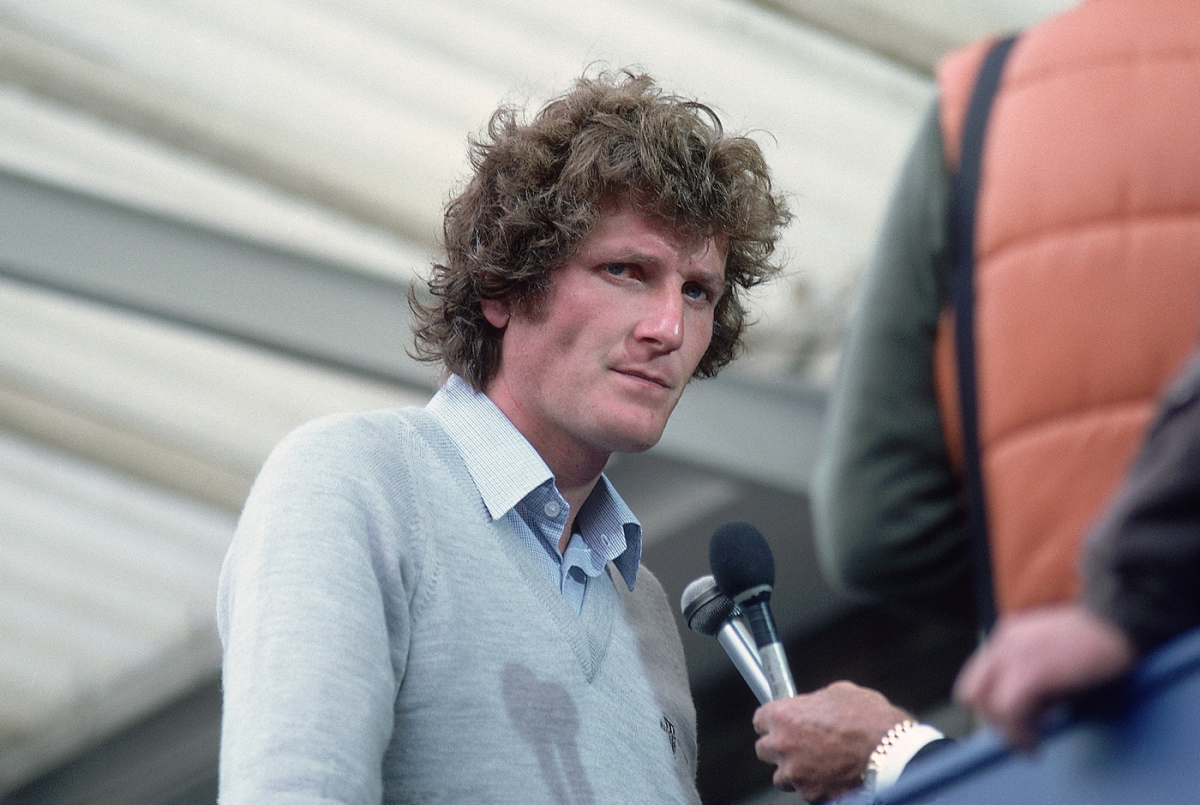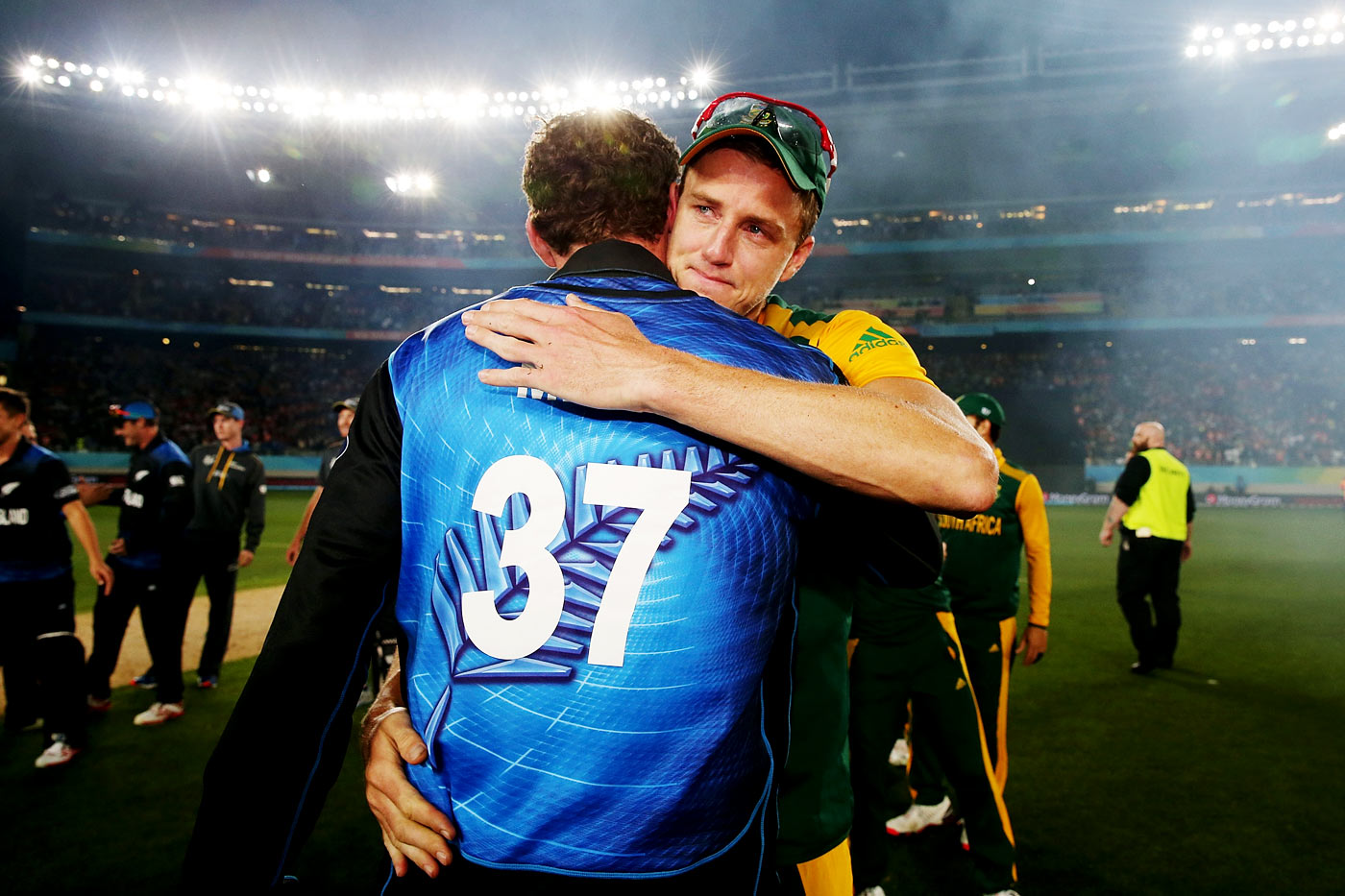Show me a hero, wrote novelist F.
Scott Fitzgerald, and I will write you a tragedy. Sporting heroes come
pre-loaded with the tragedy gene. A Muhammad Ali who goes one fight too
far, a Kapil Dev who is carried around till he breaks a record, a
Michael Schumacher who returns to the scenes of his triumphs but as an
also-ran—sport is cruel. The sportsman’s dilemma is simply stated:
should he retire when the performances sag or give it one last shot so
he can go out on a high? At either end of the performance scale, the
temptation is to carry on—either to prove yourself worthy, or to
establish there is life in the old dog yet.
Australia’s Ricky Ponting was on the verge of being dropped when he
made a century and then a double against India, and must be wondering
now how far he ought to push. His inspiration to continue playing,
Sachin Tendulkar and Rahul Dravid, are probably wondering too. They have
had phases before when nothing went right, but it was business as usual
soon enough.
Last year, Dravid made more runs than anybody else in world cricket;
the previous year, that record belonged to Tendulkar. Great sportsmen
hate to go gentle into that good night; they, like fans on their behalf,
rage against the dying of the light. For over a decade-and-a-half,
these two, V.V.S. Laxman and the oldest of the group, Sourav Ganguly,
gave India their best batting line-up, their greatest victories and
their top ranking in world cricket.
Tendulkar made his debut in the same year as the Berlin Wall fell;
Nelson Mandela was still in jail, and Mike Tyson was the world
heavyweight champion. Now pieces of the Berlin Wall decorate homes of
tourists who have visited the site, Mandela has graduated from being a
president to a concept, and no one knows who the heavyweight champion
is. But Tendulkar plays on, a boyish eminence grise in a country whose
average age is nearly the number of years he has been an international
cricketer.
Pundits have been calling for the heads of the champions, but what is
startling is the reaction of the average fan. That no effigies were
burnt and no players’ houses stoned after the Australia tour suggests a
level of indifference that is painful to behold.
Clearly, we are in the mourning period; in sport, mourning sometimes
precedes the end. But mourning can also be a period of celebration.
These cricketers have meant something special to a nation shaking free
the coils of mediocrity in so many fields and emerging self-confident
and ready to take on the world on its own terms.
At 18, V.V.S. Laxman decided to give himself four years to make it as
a cricketer; plan B was a career in medicine, the profession of his
parents and many relatives. At 22, Rahul Dravid told a friend, “I do not
want to be just another Test cricketer; I want to be bracketed with
Sunil Gavaskar and G.R. Vishwanath.” Sachin Tendulkar was 17 when he
responded to the standard query on the distractions of big money thus:
“I will never forget that it is my success on the field that is the
cause of the riches off it.”
How distant the 1990s seem now. A new India was dawning. A feted finance
minister breathed life into the vision of a prime minister whose
version of glasnost and perestroika was filed under the less romantic
label of “market reforms”. Politicians tend to make poor poster boys of
their own reforms. Happily, Tendulkar presented himself as the
candidate.
It all seems ordained now, but that is only time imposing order and
meaning to events. Tendulkar had everything—he was a Test cricketer at
16, and by 19 had made centuries in both England and Australia. He was
so obviously mama’s boy—the manager on his first tour of England, Bishan
Bedi, spoke of how all the older women wanted to mother him and the
younger ones seduce him—and patently non-controversial. And he had the
best straight drive in the business; and in the early days a fierce way
of handling the short-pitched delivery that reduced those fielding on
the leg side boundary to mere ball boys and collectors of the cricket
ball from the crowd.
Received wisdom is that India’s climb to the top of the rankings
began with that epic Calcutta Test against Steve Waugh’s Australians,
who had won their previous 16 Tests in a row. Laxman’s 281 and the
376-run partnership with Dravid ensured India won the match after
following on.
The more likely candidate for the turnaround is the Headingley Test
of 2002. India won the toss on a seaming track made-to-order for the
England bowlers. Nine times out of ten, they would have, as a defensive
measure, fielded first on winning the toss. But this was a new India and
new captain Ganguly decided to bat. India played two spinners and
didn’t pick opener S.S. Das who had made 250 against Essex in their
previous match, preferring Sanjay Bangar for his medium pace bowling and
adhesive batting.
It worked. India made over 600, with centuries from Tendulkar, Dravid
and Ganguly, and won by an innings. It was reward for boldness,
imagination and supreme self-confidence.
For a decade and more, that middle order (now strengthened by the
arrival at the top of Virender Sehwag) planted the Indian flag on
grounds all over the world—at Leeds and Adelaide, Multan and Harare,
Kingston, Johannesburg, Nottingham, Perth, Galle and Colombo.
Individual records came as byproducts of team efforts. Tendulkar’s
driving on either side of the wicket was sheer joy. As a 16-year-old, he
attacked the leg spinner Abdul Qadir, hitting him for 27 runs in an
over. It wasn’t an official international, but it brought together the
batsman’s impetuosity and creativity in one nice packet. He was actually
beaten in flight once, but trusted his instinct and his forearms to hit
high into the crowd.
Where were you when Tendulkar made his Test debut? In India,
opposition parties were coming together under the banner of the National
Front and projecting V.P. Singh as the “clean” alternative to prime
minister Rajiv Gandhi. V.P. Singh took charge while the Indian team was
in Pakistan, and Tendulkar was taking his first steps towards cricketing
immortality. Those not yet born when Tendulkar made his debut are well
over the voting age now.
It is a difficult idea to get your head around—the idea that one
individual has been a part of our national consciousness for so long.
For those who see everything in black and white, it is easy to ask for
the heads of our cricketers; the ingratitude of fans is a running theme
in sport. But Tendulkar, Dravid and Laxman have an influence well beyond
runs made and victories achieved.
For one, it is entirely possible that Indian cricket itself might
have taken a long time to recover from the match-fixing allegations a
decade ago. Skipper Mohammed Azharuddin confessed to having manipulated
results and without the obvious integrity of men like Dravid and Laxman,
and those who have retired like Ganguly, Anil Kumble, Javagal Srinath
and Venkatesh Prasad, the game might have been destroyed.
Significantly, these batsmen brought to the game an Indianness, the
inherited technique and uniqueness of a nation that is sometimes reduced
to the cliche, ‘oriental magic’. You can bowl to Laxman anywhere you
want, and he will use his wrists to send it between fielders on either
side of the wicket. There is no apparent effort, only the most elegant
of bat swings, visually all curves and gentle arcs. Laxman’s bat makes
no angles to the wind.
Dravid, the man who chose to “walk” when on 95 on his debut at
Lord’s, formed a wonderful relationship with Laxman. They have taken
over 300 catches between them at slips, and they relax, as Dravid
explained, “by talking about our families, the plumbers and carpenters
when we were building houses and so on”. When you saw a serious look on
the ever smiling face of vvs at slip, it was probably because he had
just realised that plumbers in Hyderabad charged more than those in
Bangalore. It didn’t matter. What mattered was the camaraderie, and the
fact that nearly every catch was taken.
These three players have played 118 Tests with each other. For
Tendulkar and Dravid, make that 146. That’s nearly two years in number
of days, and if you add the one-day matches, the travel, practice days
and camps to that, that’s more days spent in each other’s company than
many couples stay married.
Dravid has scored more runs for India than Tendulkar in the same
period, a statistic that is not widely known or appreciated. One of the
great sights in recent years has been his authoritative square cut or
the pull that brooked no response, played while his helmet dripped
honest sweat over a long innings. Year after year, we believed when he
was batting that god was in his heaven and all was right with the world.
In their growing years, players make huge sacrifices, leading an
almost monastic life, the focus on the game and nothing else. By the
late 30s, when other professionals—the accountants and managers who do
not cause a nation to stand up and demand their resignation—are looking
to settle down, the life of a sportsman is over. Your brief career is
done, but you have a lot of life left. How do you cope if you are not
into the media or coaching or the cauldron of politics known as cricket
administration? Especially since cricket is all you know. At 30,
Tendulkar was asked what his favourite book was, and he answered with
child-like charm, “I haven’t started reading yet.”
The players may not fully understand their future yet; but
ironically, we do not fully understand their present (or past) either.
The Owl of Minerva, wrote Hegel, “spreads its wings only with the
falling of dusk”. We understand a historical condition just as it passes
away. In the next couple of years, as we come to a greater
understanding of what Tendulkar and company meant to us, let us not
regret anything crass in the manner their twilight years were handled.
Indianness and integrity have been important aspects of the cricket of
the threesome. Indian cricket needs to handle such stalwarts with
dignity and maturity.
There is a sense that an Indian team will change from being an
old-fashioned one (in terms of behaviour, “old-fashioned” is a
compliment) into a modern, unimaginative one where joy, sorrow,
exasperation, irritation, ecstasy, sense of achievement, aggression,
love and all emotions are expressed with a four-letter word or its many
Indian versions involving close relatives. Virat Kohli is a superb
batsman and a future India captain, but his response on getting to a
century in Adelaide was juvenile. The Kohlis and others like him need to
learn from the earlier generation about self-respect and respecting the
game itself.
Not that the older lot have been pussycats, rolling over to be
tickled. Initially, Dravid’s shyness was mistaken for weakness, but not
after he responded to an Allan Donald taunt in the course of his first
century in South Africa. The Bangalore boy told the fastest bowler in
the world to assume an impossible anatomical posture, not in those words
exactly, but in a crisp, short phrase.
The message went home not only to that bowler but to all bowlers
around the world. No one tried riling either Dravid or the other two
again.
Indian cricket may be at the crossroads; the retirement of the great
players will see the end of a civilisation as we know it. But the
Tendulkars, Dravids and Laxmans—seen by many as part of the problem
now—can easily be part of the solution. India’s next series outside the
subcontinent is in Zimbabwe in July 2013. Then come the series in SA and
New Zealand. Time enough to rebuild.
Not so long ago, we used to canonise our heroes. The modern method is to spit at them. Our great players deserve better.
(
Suresh Menon is editor, Wisden India Almanack,
and author of Bishan: The Portrait of a Cricketer.)



 All animals that are grown for meat are raised, trucked and killed with
extreme cruelty. But man has taken unkindness to an art form. Let me
give you a list of the cruelest foods. I am sure I can give you at least
100, but let me start with ten.
All animals that are grown for meat are raised, trucked and killed with
extreme cruelty. But man has taken unkindness to an art form. Let me
give you a list of the cruelest foods. I am sure I can give you at least
100, but let me start with ten. 